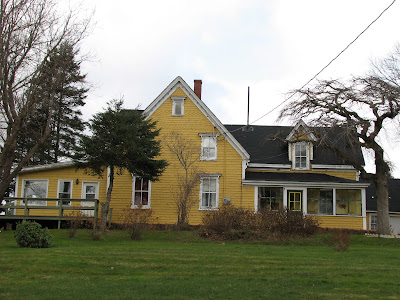When
Claude Arsenault saw my Feb. 23, 2013 blog post about the 2013 Heritage Award
presentations and the PEIMHF logo, he told me about designing it many years ago.
“I designed the PEI Museum logo
about 40 years ago when I was a student of Graphic Design at Sheridan College, about 1970.
I was asked by Ardis
Desborough, my first art teacher in Summerside, who was somehow involved in
Father Bolger's project through Wanda Wyatt as Ardis held art classes
there. That’s how it all evolved – in
those days there was no computer designing and Graphic Design was relatively
uncommon locally.
I remember working on
it - it all came from a post card picture I bought at Charlottetown airport,
when I was returning from my Christmas break!
I used Province House as a starting point, and reduced it down to make
it more domestic in scale; and the three arches, worked out nicely to symbolize
Prince, Queens and Kings counties, with
the roof as a umbrella sort of idea - not unlike the Island provincial flag
with the trees, etc.
So, I sent the original artwork to
Father Bolger and never gave it another thought. I received an honorarium for this work. Then moving back home a few years ago I started
to see it here and there, at Eptek Centre, Green Park Shipbuilding Museum, on
plaques, letterheads, etc. One day in
passing I told the story to the current director of PEIMHF who hadn’t heard the
story of its origin.
In retrospect, I love the logo,
and it is a sort of living legacy, and that makes me happy. It gets used
in many different applications; colour changes etc. and has stood the test of
time, because, in my opinion, it is simple and not complicated.”
- Claude Arsenault, Birch Hill,
P.E.I.



































.jpg)

